Parakeets are a type of parrot that are indigenous to Australia. They are also known as budgies or budgerigars. These colorful little birds are common pets all over the world, and people train them to do things like sit on their shoulders, play with toys, and sometimes mimic human speech. However, before you can train a parakeet, you have to earn its trust. Building a bond with your budgie may take some time and patience, but it’s completely worth it, and you have a lot of fun along the way. Below is a guide on how to train your parakeet, with seven helpful tips for gaining trust.

Parakeets are a type of parrot that are indigenous to Australia. They are also known as budgies or budgerigars.
©iStock.com/Alina Lebed
1. Provide a Comfortable Environment For Your Parakeet
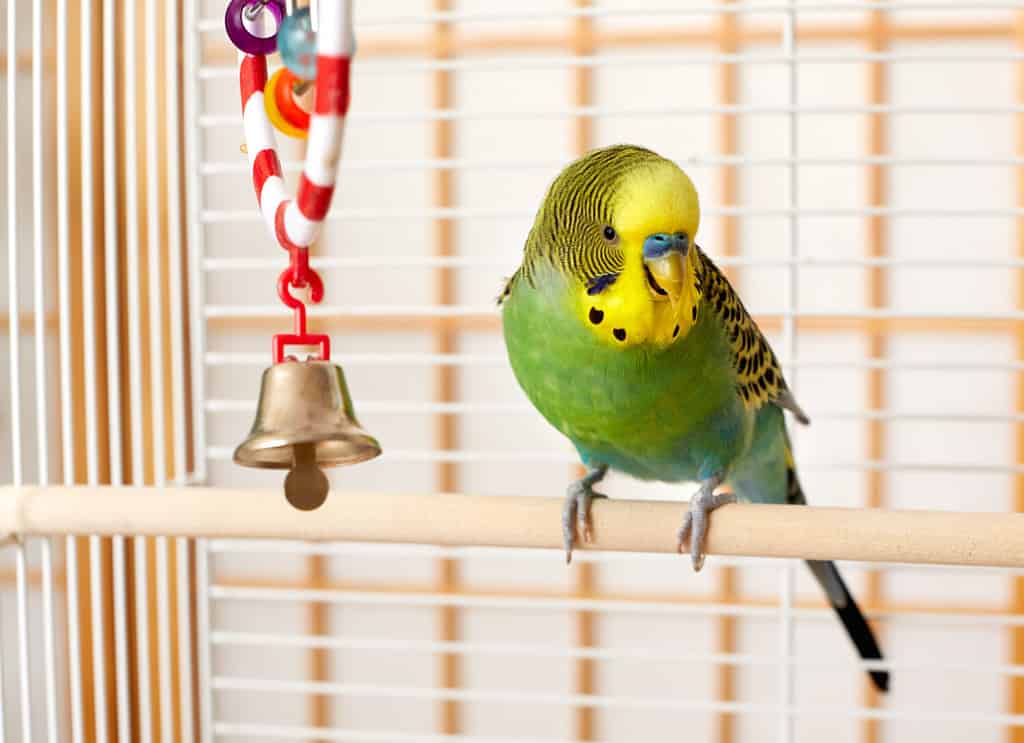
Ensure the cage is large enough for your budgie, and place it in a room that’s not too hot or cold.
©kurhan/Shutterstock.com
Your parakeet needs to feel comfortable in your home, so you need to provide it with a warm, safe, and clean environment. When you’re parakeet is happy, it will not want to escape and look for greener pastures. It will feel more comfortable with you and easy access to water and food. You can find everything you need at a pet supply store. Ensure the cage is large enough for your budgie, and place it in a room that’s not too hot or cold. If you feel comfortable with the temperature, then it should be fine for your budgie as well.
2. Use a calm and Friendly Voice When Talking to Your Parakeet Daily
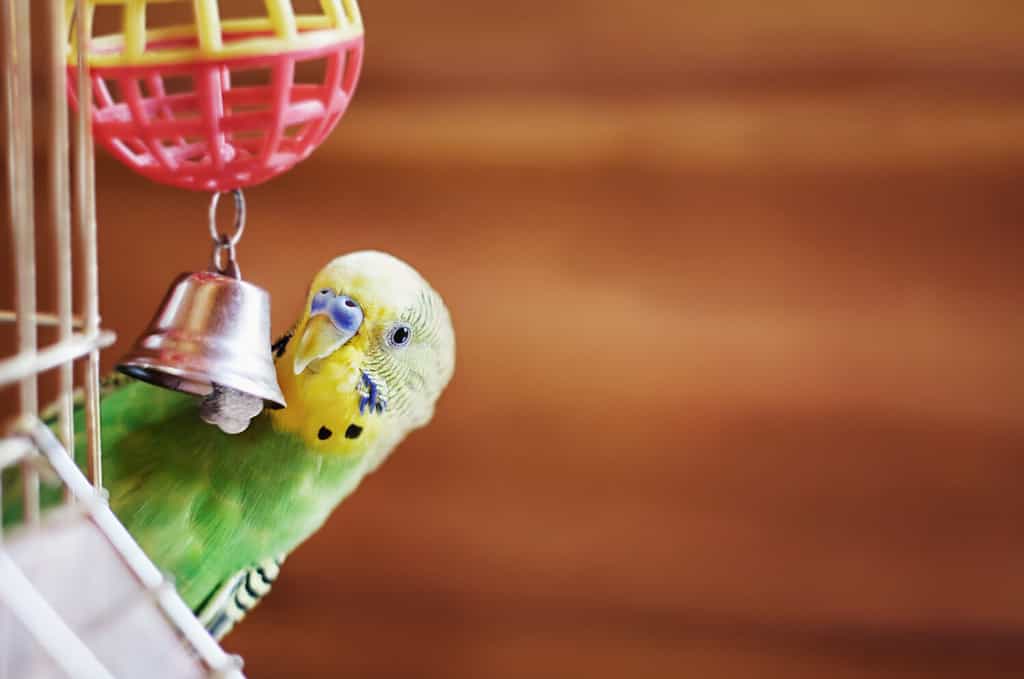
You can start the bonding process by placing its cage in a room you spend a lot of time in so the parakeet gets used to you quicker.
©Vyaseleva Elena/Shutterstock.com
It’s important to be patient when trying to bond with your budgie. Don’t try to tame it immediately. Allow it a few weeks to settle in and get used to you and its new surroundings. However, you can start the bonding process by placing its cage in a room you spend a lot of time in so the parakeet gets used to you quicker. Additionally, playing music helps the bird acclimate to the volume level of your home, and many budgies enjoy the sound of music. But, most importantly, use a calm and affectionate voice when giving your parakeet water and food so it associates you with positivity. Furthermore, try to win its affection with treats, but not too many.
3. Let Your Parakeet Fly Free Inside or Clip Its Wings

Clipping your parakeet’s wings can make training easier.
©Eric Isselee/Shutterstock.com
Keeping your parakeet confined to its cage is not good for its mental well-being. They are birds, and they need to explore. So, if you do not want to clip your parakeet’s wings, let it fly around inside with all the windows and doors closed, under strict supervision. This is a great way to keep them mentally stimulated and physically active. In addition, it is a fantastic way to introduce your budgie to things in your home or a new room. The parakeet will soon feel safe in your company and begin to trust you.
If you think clipping your parakeet’s wings is the right option for you, consult with your veterinarian. The procedure is not painful as long as it’s done by a professional. After the procedure, your parakeet won’t be able to fly for a few months while its feathers are growing back. As a result, your beloved budgie can join you outside in the yard, and you don’t have to worry about it escaping. Furthermore, it also makes it easier to train your parakeet.
4. Hand-Feed Your Parakeet Every Day
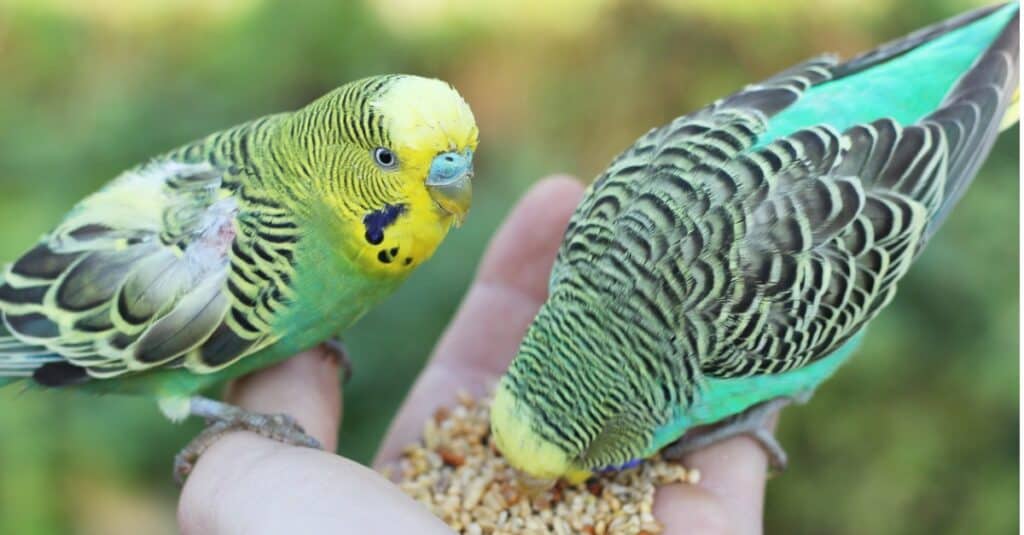
It’s essential that you do not try to grab the bird during the early stages. It must come to you. If the bird tries to move around in the cage while your hand is still inside, keep it there until it calms down.
©iStock.com/urafoc
When building trust with your parakeet, hand-feed it every day so it becomes used to your hand. You can do this by opening the cage door and inserting your hand. While you are doing this, talk to the budgie softly. It will help if you have a treat like a millet or sunflower seed; place it in the palm of your hand. The parakeet might not want to take the treat immediately and might require several attempts. It’s essential that you do not try to grab the bird during the early stages. It must come to you. If the bird tries to move around in the cage while your hand is still inside, keep it there until it calms down. These sessions should only last for approximately 10 minutes.
5. Teach Your Parakeet to Hop Onto a Stick
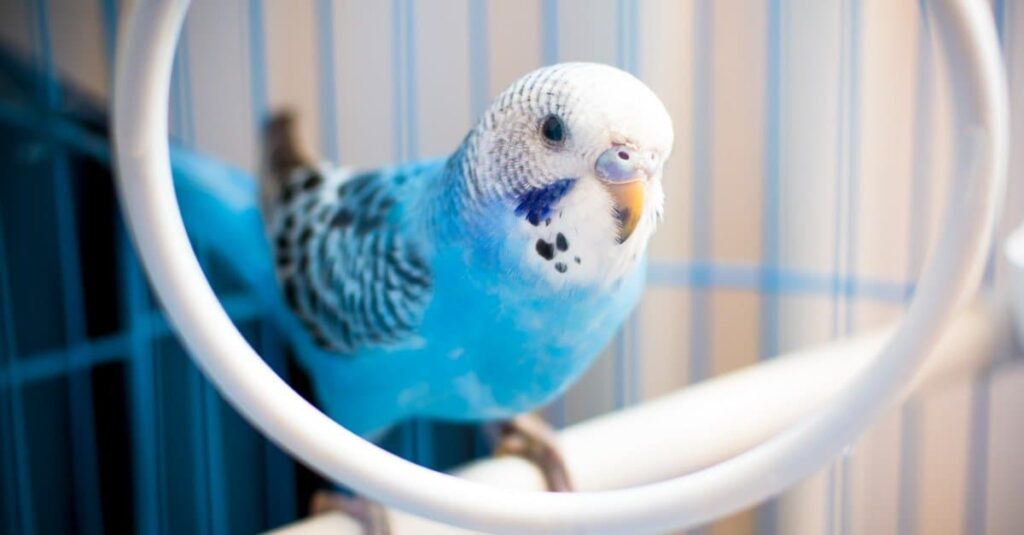
You can try coaxing the parakeet onto the perch by pressing it gently against its body. After repeating this process a few times, the parakeet will learn to jump onto the stick or perch.
©iStock.com/averess
When training your parakeet, one of the first lessons is teaching it to hop onto a stick. So, once your budgie is used to your hands, try to get it to hop onto a stick or perch. You can do this by opening the cage door and slowly inserting the perch. You can try coaxing the parakeet onto the perch by pressing it gently against its body. After repeating this process a few times, the parakeet will learn to jump onto the stick or perch. However, at first, keep the perch inside the cage. Don’t be in a hurry to move it beyond the confines of its safety zone, as it still needs some time to trust you.
6. Teach Your Parakeet to Hop Onto Your Finger
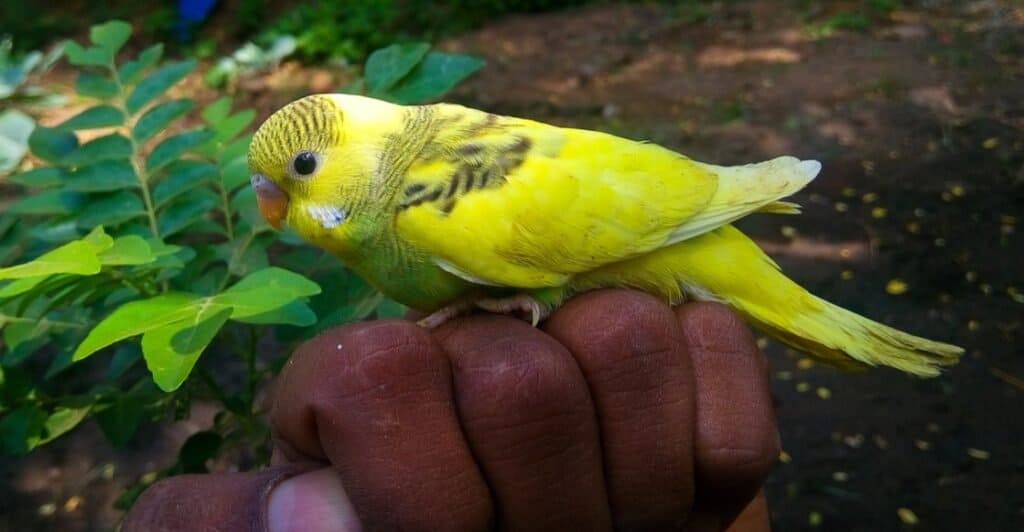
If you notice that your parakeet is not scared of the presence of your hand, you can attempt to rub your finger against its belly while gently saying “up.”
©ELAMARAN ELAA PHOTOGRAPHY/Shutterstock.com
Once your parakeet has mastered the perch or stick, you can begin to place your finger next to its body and see if it will hop onto it. Alternatively, you can put your finger next to the perch or stick and see if the budgie will jump onto it. If you notice that your parakeet is not scared of the presence of your hand, you can attempt to rub your finger against its belly while gently saying “up.” Then, when you return your budgie to its cage, say “down” when placing it back on the perch.
7. Provide Your Parakeet With Many Toys

Birds are different from cats and dogs, so it’s essential they have access to several toys throughout the day and receive new toys often.
©kurhan/Shutterstock.com
Parakeets are stimulated by a variety of colorful and fun toys. These toys are available online or at most pet or grocery stores. However, you can also make your own toys out of rope and wood. Birds are different from cats and dogs, so it’s essential they have access to several toys throughout the day and receive new toys often. Otherwise, they become completely dependent on you as their source of entertainment. Introducing your budgie to new toys is also a great way to bond with it. Instead of buying new toys all the time, rotate its existing toys every month. Some of the best toys you can buy your parakeet include:
- Swings
- Ladders
- Bells
- Mirrors
- Non-poisonous house plants for perching when they are flying around the house
- Wooden chew toys, ideal for keeping their beaks trimmed
Thank you for reading! Have some feedback for us? Contact the AZ Animals editorial team.








